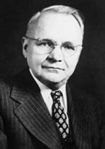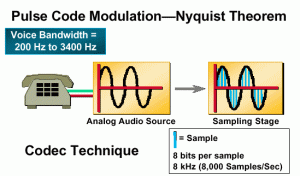Nyquist Theorem
Last night I started watching the introduction to VoIP. While the ‘why’ is easy to understand and been part of my work for years, the ‘how’ is new and unfamiliar.
The review of different devices and topologies wasn’t exciting, it is after all a basic introduction but one piece caught me and sent me digging: the Nyquist Theorem
Harry Nyquist is the son of Lars Jonsson, he was the fourth child of eight and was born on February 7th 1889 in Nilsby, Sweden.
I guess this is where the story get interesting – the name Jonsson had to be changed because about a hundred meters away from their house lived another Lars Jonsson and there was huge problem with the mail delivery…
Harry’s father agreed to change names (which wasn’t a rare thing to do at the time), he changed the name to Nyquist. Isn’t it amazing?
I wonder what was Harry’s dad thinking when he picked this weird name…
When Harry moved to the USA he was able to get great education and achieved his Ph.D. in physics in 1917 at Yale. nice!
His working career started working for AT&T and then Bell from 1917 for 37 years he had a big part in many inventions including the FAX and more than 100 patents.
Read more on Harry Nyquist’s biography here.
One of his big achievements which is also the reason we’re here is the Nyquist Theorem. A great achievements that even today, with all the technological progress is a foundation to voice based technologies.
The Nyquist theorem states that a signal must be sampled at least twice as fast as the bandwidth of the signal to accurately reconstruct the waveform; otherwise, the high-frequency content will alias at a frequency inside the spectrum of interest (passband). An alias is a false lower frequency component that appears in sampled data acquired at too low a sampling rate.
- Pulse Code Modulation – The first step to convert the signal from analog to digital is to filter out the higher frequency component of the signal. Most of the energy of spoken language is somewhere between 200 or 300 hertz and about 2700 or 2800 hertz.
The second step to convert an analog voice signal to a digital voice signal is to sample the Filtered input signal at a constant sampling frequency. The pulse train moves at a constant frequency, called the sampling frequency. The analog voice signal can be sampled at a million times per second or at two to three times per second.
the next step is to digitize these samples in preparation for transmission over a Telephony network. The process of digitizing analog voice signals is called PCM.
- Differential Pulse Code Modulation- This is a similar but improved technique to cut the size of the data for the same content.
Differential PCM (DPCM) is designed to calculate this difference and then transmit this small difference signal instead of the entire input sample signal. Since the difference between input samples is less than an entire input sample, the number of bits required for transmission is reduced. Using DPCM can reduce the bit rate of voice transmission down to 48 kbps.
My favorite part is the revelation of 64:
As the input signal samples enter the quantization phase, they are assigned to a quantization interval. All quantization intervals are equally spaced (uniform quantization) throughout the dynamic range of the input analog signal. Each quantization interval is assigned a discrete value in the form of a binary code word. The standard word size used is eight bits. If an input analog signal is sampled 8000 times per second and each sample is given a code word that is eight bits long, then the maximum transmission bit rate for Telephony systems using PCM is 64,000 bits per second. In other words, if we sample the sound frequent enough we’ll have enough data to transmit and rebuild it on the other side. Nyquist suggested double or more and the reason is that the edges of the wave change faster and will not be able to reconstruct unless we get at least twice the samples.
If you’re into the numbers behind the theory (or shall I say if you’re a real geek) This Document have the formulas and details that are way beyond the exam scope or my interest.



thanks for the information ..
can add to my knowledge …